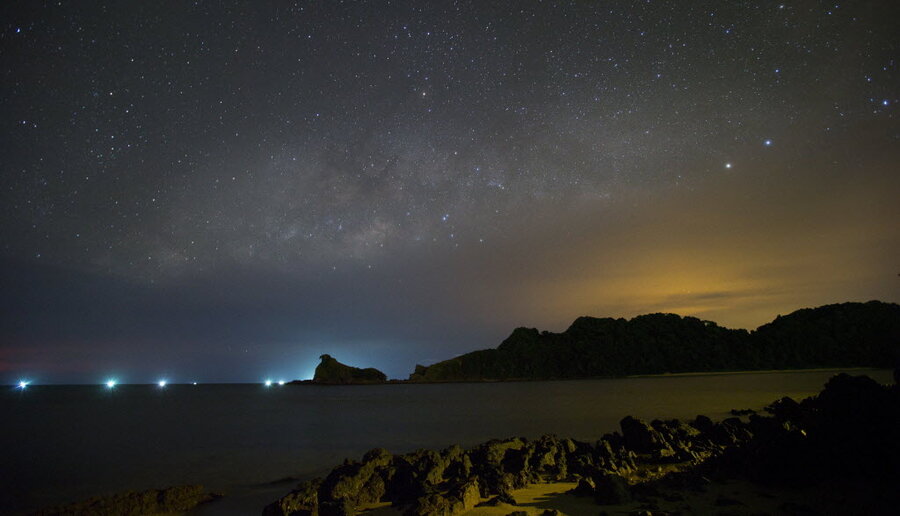Thanks to clouds, some 60 billion planets are habitable in Milky Way
“Life would be dull if we had to look up at a cloudless monotony all day,” writes Gavin Pretor-Pinney in the Cloudspotter’s Guide.
That, and life would be more difficult to find.
New research that factors in cloud cover and its influence on alien climate has extended the habitable zone around red dwarf stars to include double the number of planets in that life-supporting region. That means that some 60 billion habitable planets could be orbiting red dwarf stars in the Milky Way galaxy alone.
Scientists had previously believed that each red dwarf had just one Earth-sized planet in its habitable zone – the sweet spot just far enough from the sun that the planet’s water doesn’t turn to vapor in the overwhelming heat, and just close enough that water doesn’t freeze without the reassuring warmth of the sun’s glow.
But now that habitable zone, once thought to be fairly small around the eponymously named red dwarfs – the stars are small and faint, relative to our sun – has been expanded. That’s because the formula for calculating the habitable zone of far-flung planets had not previously included how cloud cover might mitigate the star’s influence planets.
"Clouds cause warming, and they cause cooling on Earth," said Dorian Abbot, an assistant professor in geophysical sciences at the University of Chicago. "They reflect sunlight to cool things off, and they absorb infrared radiation from the surface to make a greenhouse effect. That's part of what keeps the planet warm enough to sustain life."
Building 3D computer models that simulate how clouds behave on alien planets, researchers at the University of Chicago and Northwestern University found that where there is surface water there are also water clouds. On planets close to their sun, those clouds exert a significant cooling effect, which allows those planets to retain their water, despite their closeness to the dwarf star’s heat. That means that the habitable zone has been extended inward, closer to the star, than had been imagined to be possible.
The researchers plan to test their findings, published in Astrophysical Journal Letters, with the James Webb Telescope, which will go into orbit into 2018, taking the temperature of those alien planets during their days and nights to measure cloud cover.
But the big question is, when an alien looks up at that planet’s clouds, what strange shapes, what foreign animals or objects or ideas, does he or she see?







